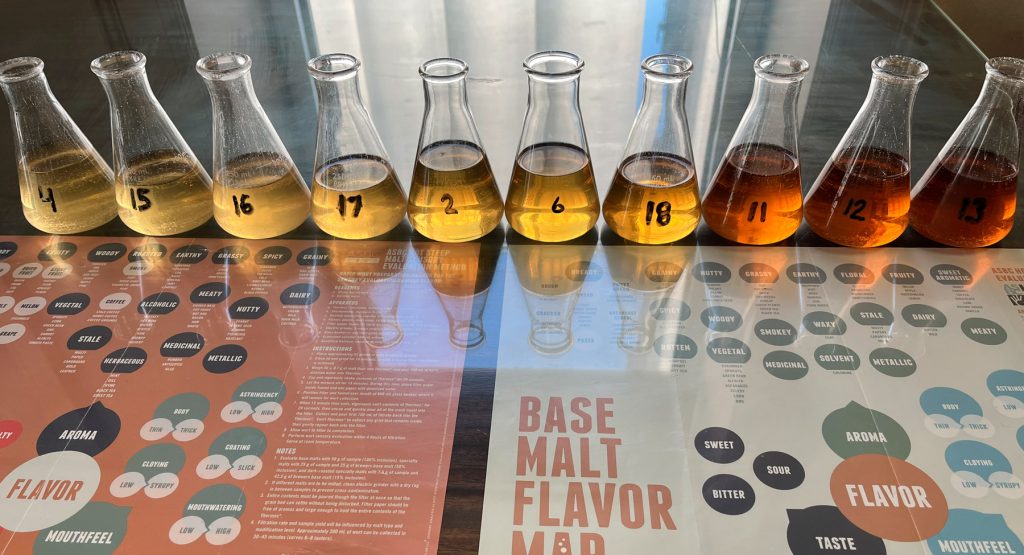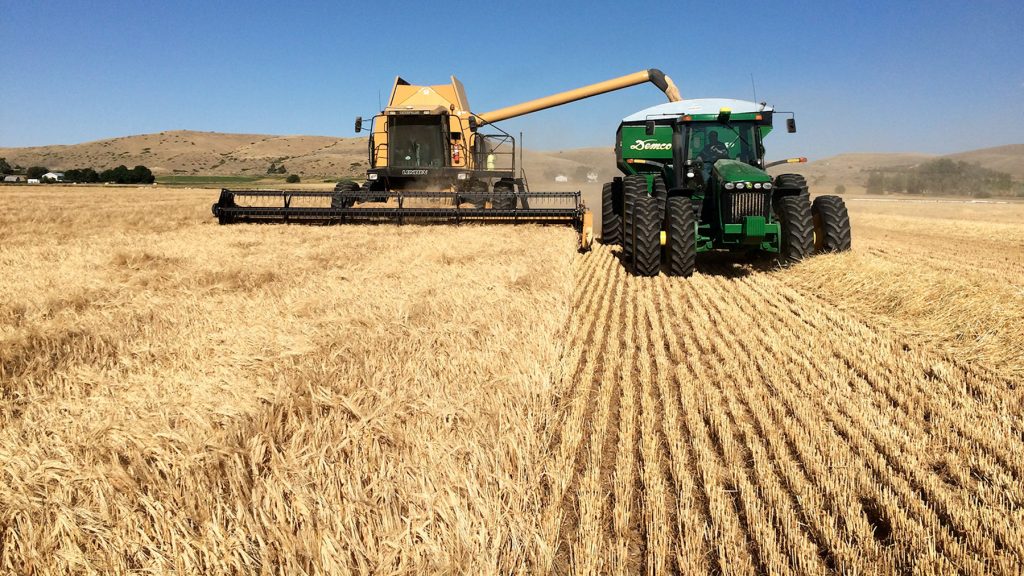
One of the most common questions we get asked as a maltster is, “How long can I store malt?” The answer to that question is pretty complex, but as with most products, the fresher the better. There is an important distinction to make between expiration dates and best-by dates. An expiration date marks the date at which a product is no longer safe for humans to consume. As produced, whole kernel malt will be safe to use for a very long time, however, that does not mean it will not change over time. For that reason, we provide best-by dates, commonly known as shelf life rather than expiration dates.
Time has a way of changing things, and there will be some loss of aromatic flavor compounds in addition to changes in the biological function of the products. Because specialty malts come in such a wide variety of colors, flavors, and functions, there is no single time frame that can be selected as the best-by date for all products. Properly storing your ingredients, whether you are storing your grain in 50 lb. bags, super sacks, or bulk silos, will help them maintain the highest level of quality possible over time.
Before releasing a product, our Technical and Sensory teams have the task of determining the appropriate best-by date. The most important factors to consider when determining the shelf life are determining if the product is maintaining the expectations for flavor, function, and processing. In general, there has been research showing that when malt is stored properly it is stable for up to 12 months. Research also shows that malt fresh off the kiln has a potentially negative impact on processing, contributing to longer lautering times, which is one of the reasons it has become industry standard to hold finished grain for a minimum of three weeks before packaging. Beyond the technical research, we need to verify that our products are meeting our expectations periodically through shelf life studies. Eventually, best by-dates are assigned according to how each product will meet the needs of the customer at the quality level that we and the customer expect.

The first step in verifying the soundness of malt is doing a full malt analysis. Attributes such as color, pH, enzymes, protein, soluble protein, etc., should not diminish significantly before the best-by date has passed. If there has been a significant change in the analysis, we can be certain the product is not a match and has gone beyond its shelf life. These analytical parameters will also help determine if the product will function in the brewhouse as expected. Moisture is often the first indicator of a change in malt, though this is highly influenced by the storage conditions the malt is exposed to. Moisture in malt will influence how the grain processes during milling and potentially affect processing in the brewhouse. In the case of specialty base malts, the grain is expected to provide the enzymes for converting starchy wort into sugar for yeast to consume. Research confirms our own observations in shelf life studies that biological function is sound well beyond our best-by dates. Verifying the analytical parameters is the first step to ensuring it will meet the product expectations and function at a high level.
As most brewers know, analytical parameters cannot tell the entire story of what malt provides to beer. Flavor is an essential part of specialty malt, and each product must meet the brand expectations for flavor throughout its shelf life. From the time that malt is finished, the flavor profile will begin to change. The task of our Sensory team is to determine when that profile becomes significantly different. Worts are tasted daily to build expected brand profiles and those profiles become the basis for comparison during a shelf life evaluation. Our Sensory team determines when the product no longer meets the brand profile and flavor expectations and sets shelf life accordingly. The most volatile flavor components can be lost quickly, in the case of roasted malts, hours after roasting. Other more stable compounds will be present in the malt well beyond the best-by date. While base and specialty malts are intended to provide different functions to finished beer in addition, all malts must meet flavor expectations during a shelf life study.
In most cases, the question, “How long can I store malt?” is answered with a simple numerical value. That value is determined best through experience and evaluation as it is by our Technical and Sensory teams. Bob Hansen, Briess’ Director of Technical Services, also known as the “local technical guru,” helped illustrate that message when he told me, “We don’t just make malt, what we really make is color, flavor, and function” and it is our job to ensure that our products meet those expectations throughout their shelf life.
Related References:
Shelf life information can be found on the “Product Details” tab on our website for each product here: https://www.brewingwithbriess.com/products/
Tips for Malt Storage Practices: https://www.brewingwithbriess.com/order-info/handling-storing-dry-malt/
Wondering how much malt storage you need? Read the Briess Blog on Storage Configurations here: https://www.brewingwithbriess.com/blog/malt-storage-solutions-what-configurations-works-best-for-you/
Knowing when your product was produced is essential for determining how fresh your malt is. Need a fresh reminder on decoding Briess’ lot code? Read along here: https://www.brewingwithbriess.com/order-info/lot-codes/


